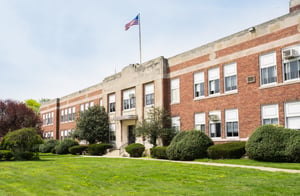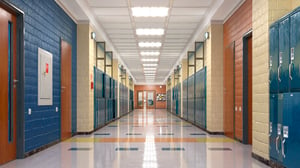
It’s August, and for most families and students that means school is back in session or soon will be.
While in school, students of course are there to focus on learning – but learning can only happen if threats like fire risks are considered and planned for, so that teachers can focus on doing their job without worrying about these issues.
There are special considerations when it comes to schools and fire safety, in part because nearly two out of every school building fire is set intentionally, according to the National Fire Protection Association (NFPA). This is different from most other industries, where fires tend to be mechanical or accidental.
In this blog, we’re exploring four tips all schools should consider when thinking about fire safety as we head into the new school year.
1. Keep security top of mind.
Every year, there are more than 3,000 school structure fires – many of which were set intentionally. Additionally, fires were most likely to start in a bathroom or locker room, and occur between 8 a.m. and 4 p.m., according to the NFPA.
With these statistics in mind, security measures are essential when it comes to preventing intentionally set fires. Outside of the school, make sure you have exterior lighting with timers and motion-sensitive settings, along with alarms on doors windows, and other possible entry points to the school. Large dumpsters should also be kept away from the school building, to help reduce the chance for fires in those to spread.
2. Check your landscaping.
Another important area to consider when it comes to school fire safety is the landscaping outside the school.
Make sure that any bushes, trees, landscaping waste or other potentially flammable materials are kept well away from school buildings, or trimmed back appropriately. While this is important for actual fire safety, it’s also an important measure to take to ensure that your exits are all clear if they’re needed in an emergency exit.
If a fire breaks out, you want to make sure all windows, doors and other exits will open easily. Trimming back trees, bushes and other plants helps make sure they will.
3. Review and practice all emergency plans.
 One of the most important steps in any fire safety plan is reviewing and practicing what to do if a fire breaks out – and that’s especially important in school environments.
One of the most important steps in any fire safety plan is reviewing and practicing what to do if a fire breaks out – and that’s especially important in school environments.
In Indiana, fire drills must be done within the first 10 days of school starting, then once a month after that. There should be a mix of planned and unplanned drills. Tornado drills also must be done once a semester.
Drills are important so that teachers, students and staff members all know exactly what to do in an emergency. No matter where someone is in the school building, everyone should know where the nearest exits are and where to go once they are outside of the building. Practicing frequently makes it something that you don’t even have to think about – you just know what to do.
4. Stay up on all maintenance and inspections.
Along with making sure your security systems are up to scratch, it’s essential to conduct all required inspections and maintenance on your fire and life safety systems. This includes alarm systems, sprinkler systems, fire extinguishers, exit lighting, emergency signage and more.
All of these different elements have different maintenance schedules. Some require testing monthly, while others may require only an annual inspection. Breaks throughout the school year are a great time to knock out the bigger maintenance items since students are out of school anyway. However, it’s also very possible to do maintenance during the school year – don’t put it off until next year.
Working with experts like our CertaSite certified life safety technicians will ensure that you stay in compliance and keep your students and staff as safe as possible. We’ll take care of it all for you so that you never have to worry about if everything is up to date.
Ready to get started? Reach out to us for a consultation at CertaSitePro.com.




